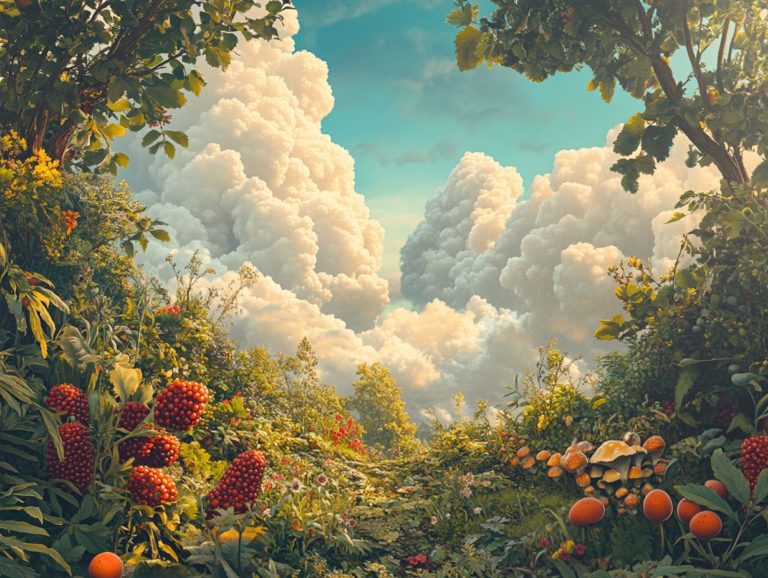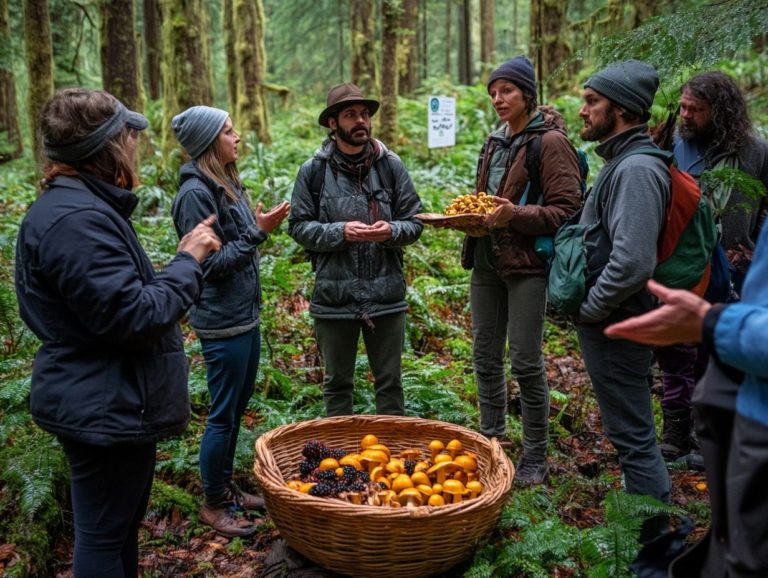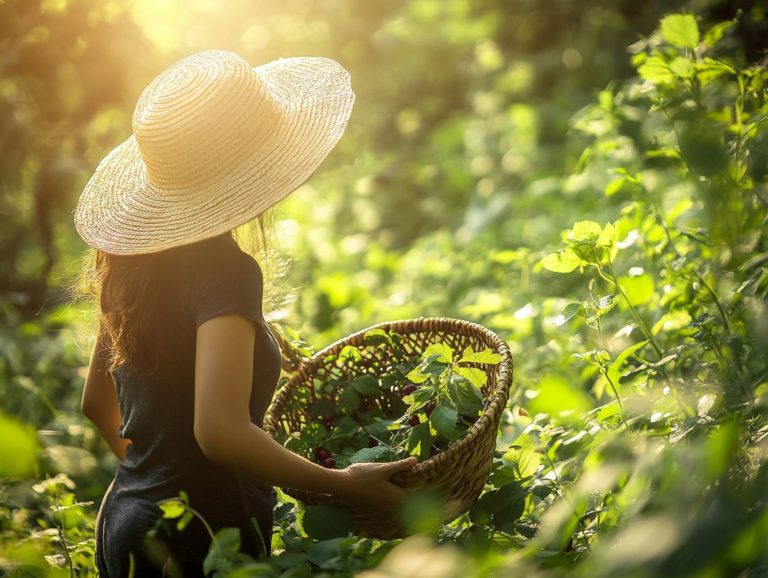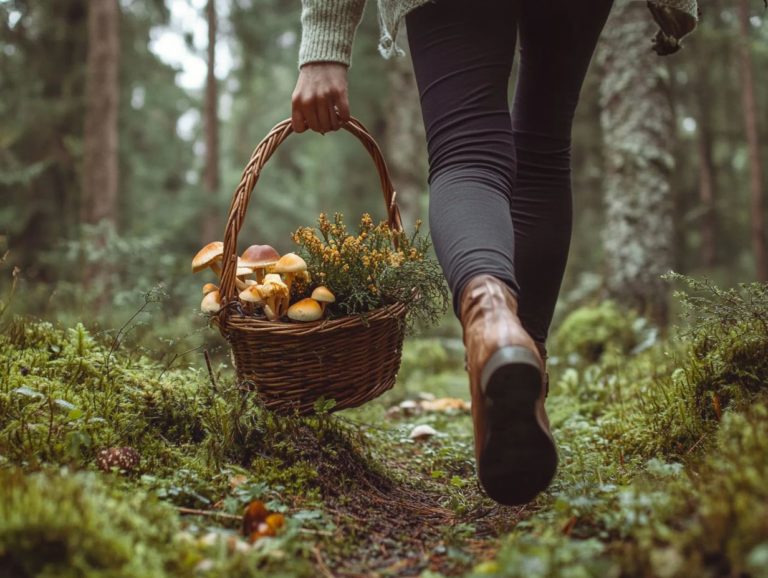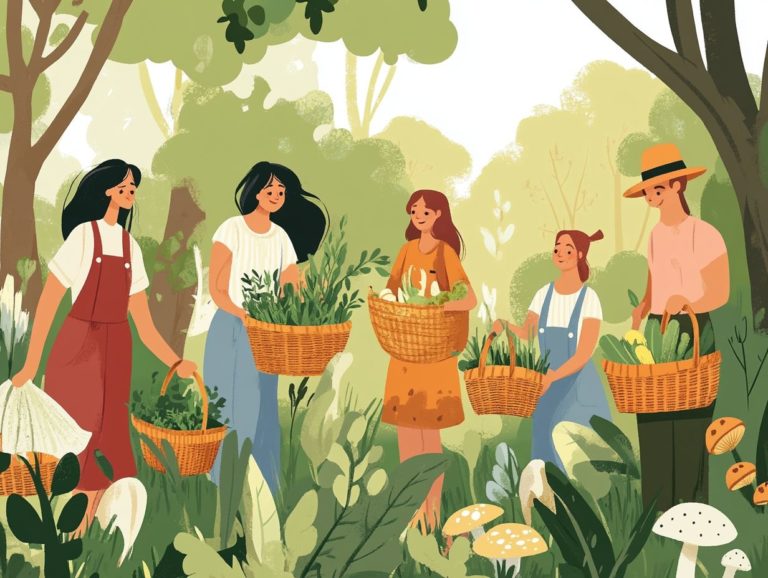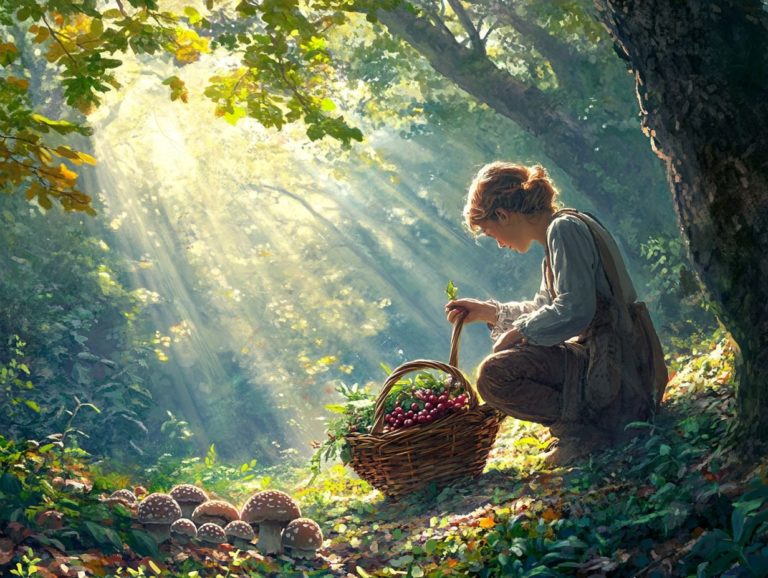5 Common Mistakes New Foragers Make
Foraging has emerged as an exhilarating way for you to connect with nature and uncover the delicious, edible treasures that flourish all around you, including various wild plants that are often overlooked.
As a new forager, you might stumble upon common pitfalls that could transform this rewarding adventure into a frustrating experience. From mistaking plants to overharvesting and overlooking legal guidelines, these missteps can significantly impact both your foraging journey and the environment.
This article delves into the five most prevalent blunders made by novice foragers, paired with essential tips to elevate your foraging experience. Whether you’re eager to broaden your culinary horizons with wild foods or simply revel in the beauty of nature, grasping these key insights will undoubtedly pave the way for your success!
Contents
Key Takeaways:
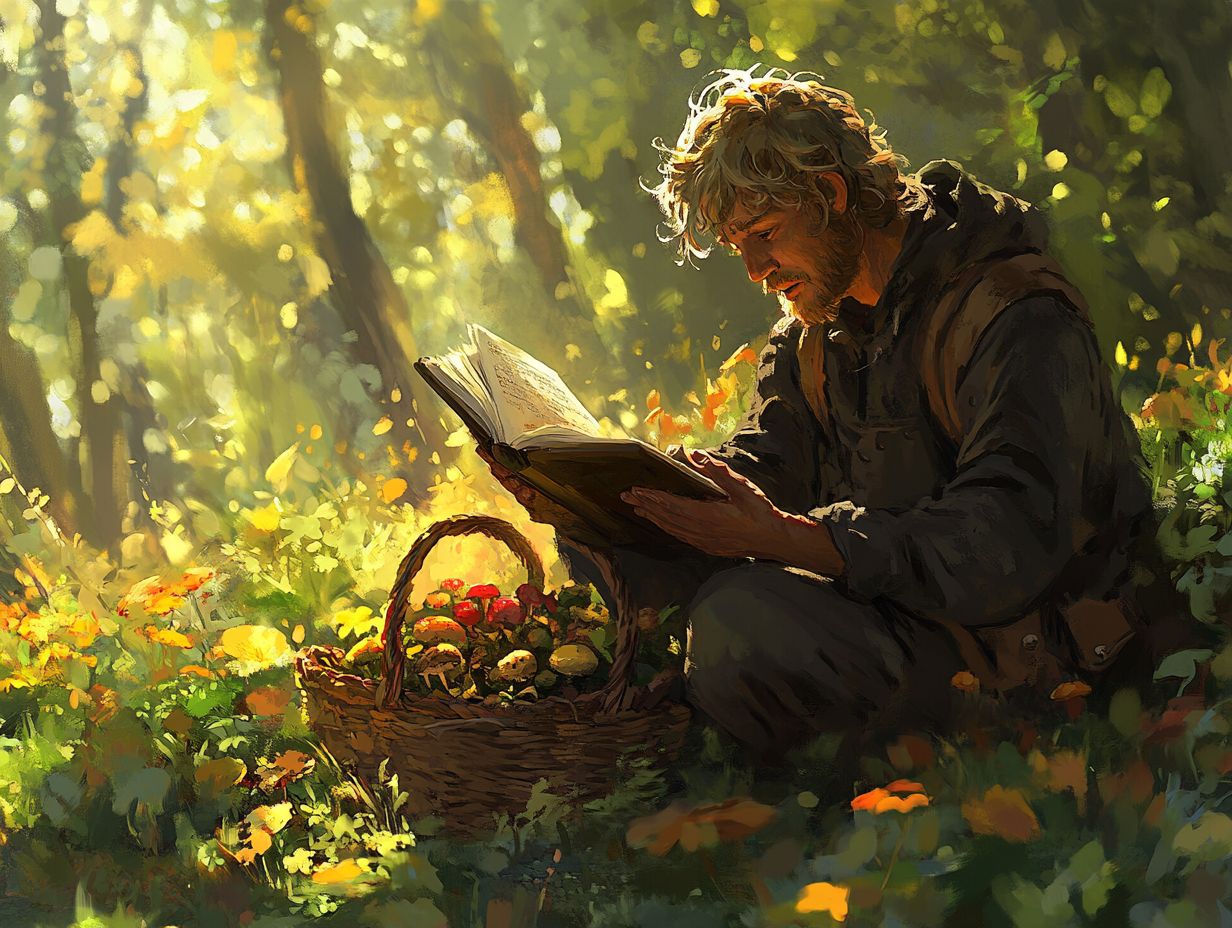
- Properly identifying plants is crucial for safe foraging. Mistaking a poisonous plant for an edible one can have serious consequences, especially when identifying plants like chickweed and dandelion. Take the time to learn about the plants in your area before foraging.
- Knowing when and where to forage is key. Some plants are only available during certain seasons or in specific locations. Make sure to research and plan your foraging trips accordingly.
- Overharvesting can harm the environment and deplete resources. Respect nature and only take what you need. Consider leaving some plants behind to ensure their sustainability.
1. Not Properly Identifying Plants
One of the most critical aspects of foraging is your ability to properly identify plants. Mistaking them can lead to consuming poisonous varieties rather than safe, edible options that thrive in your local environment, especially if you’re just starting your journey into the rich world of wild foods. To ensure success, consider these top 5 tips for successful foraging.
Understanding the key features of each plant is essential, particularly when distinguishing between look-alikes. For instance, take morel mushrooms; they re a sought-after delicacy, yet they can easily be confused with toxic false morels. Learning the subtle differences in their shapes and colors becomes crucial for your safety.
Common plants like dandelion and chickweed are easy to spot and readily available for novice foragers. Their distinct features like the jagged leaves of dandelion and the tender, grass-like leaves of chickweed are hard to overlook.
Engaging in foraging classes or joining local foraging groups can provide you with invaluable insights. Participants share their expertise and firsthand experiences, making the learning process both enriching and enjoyable!
2. Not Knowing When and Where to Forage
Knowing when and where to forage is crucial for a successful wild harvesting experience. The growth cycles of native plants differ, and understanding how plants grow over time can greatly enhance your foraging journey, especially if you re eager to delve into sustainable practices.
Take morel mushrooms, for instance they flourish in the spring, typically popping up between March and May, particularly after a warm rain. As a new forager, you ll want to look for their distinctive, honeycomb-like caps, often found in wooded areas or near dying elm trees.
Local parks and natural reserves are treasure troves of edible plants. A visit to places like state national parks could uncover hidden gems such as ramps or wild garlic in early spring. By keeping an eye out for biodiversity, like the presence of specific trees, you can navigate to rich harvesting spots filled with edible plants, turning your adventure into a rewarding and educational experience!
Are you ready to discover edible treasures? Get outside and start your foraging adventure today!
3. Overharvesting
Overharvesting presents a serious threat to the sustainability of local ecosystems, making it essential for you as a forager to practice responsible wild harvesting. Understanding the impact of your actions on plant species is crucial, ensuring you leave enough for future growth and biodiversity.
Finding a balance between your personal consumption and ecological responsibility is vital. Some plant species, if harvested excessively, face decline or even extinction.
It’s important for you to educate yourself about which species are vulnerable, like certain wild plants, and to prioritize those that thrive in abundance. By doing this, you not only help preserve the health of your local environments but also help everyone learn about sustainable practices.
Supporting initiatives like United Plant Savers enhances these efforts, as they advocate for the conservation of native plant species and educate the public on the necessity of preserving biodiversity for future generations. Thus, responsible foraging transforms into a collective responsibility, fostering a harmonious relationship between humanity and the natural world.
4. Not Following Foraging Laws and Regulations
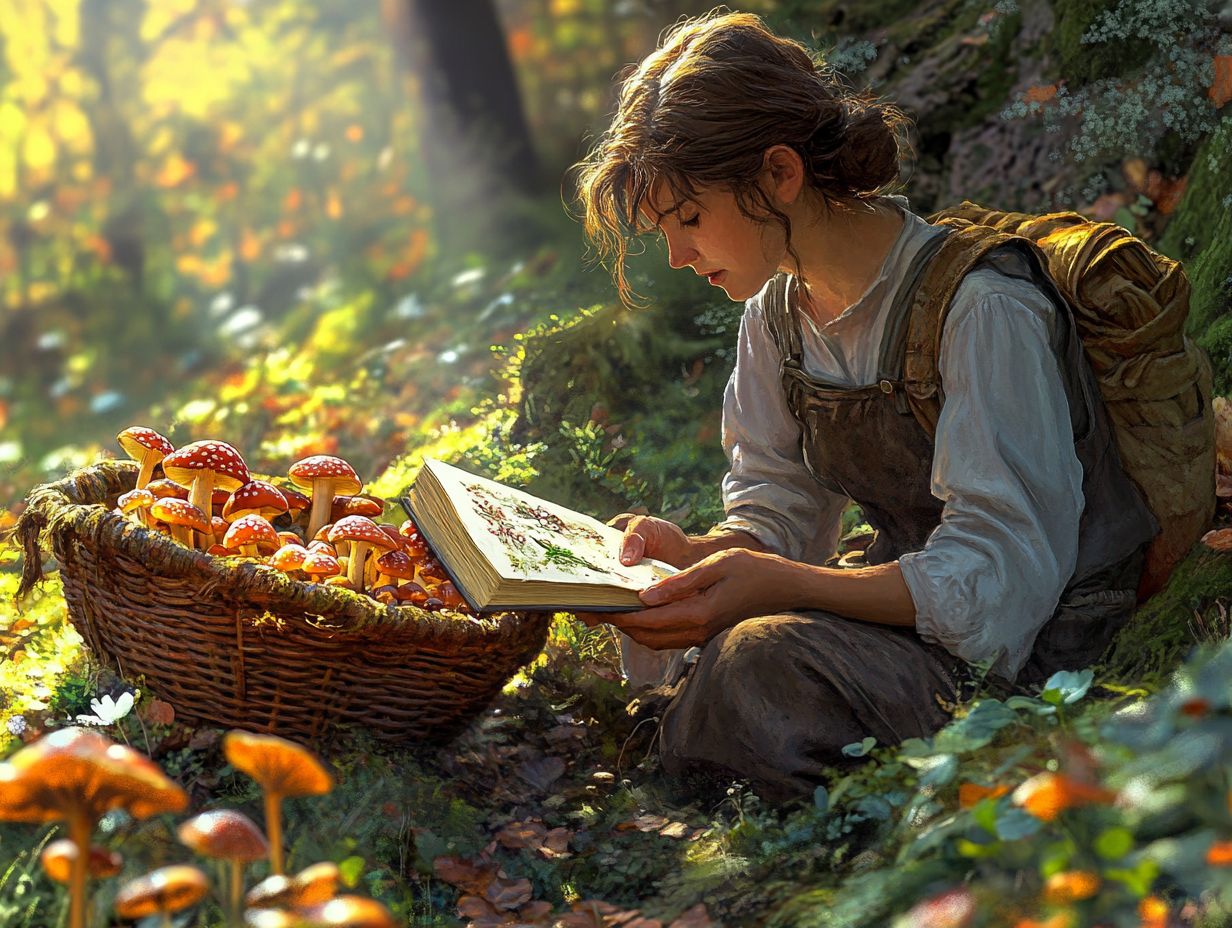
Adhering to foraging laws and regulations is essential for maintaining safe and sustainable practices. By respecting protected areas like National Parks, where the collection of wild plants may be restricted or regulated, you help protect natural habitats and biodiversity.
Knowing local laws helps you understand which plants can be legally harvested and where, ensuring a more responsible foraging experience. Many communities offer valuable resources, such as local library guides, environmental organizations, and government websites, all providing detailed information on foraging regulations.
Ignoring these laws can result in hefty fines. It also harms local ecosystems, so stay informed!
Engaging with local foraging groups can also enrich your knowledge and appreciation of native flora, all while fostering a deeper respect for the natural environments around you.
5. Not Properly Preparing and Storing Foraged Foods
You must prepare and store foraged foods properly. This ensures they taste great and are safe to eat. Improper handling can lead to spoilage or even foodborne illnesses, so having a first aid kit at the ready is a wise precaution for any forager in the field. To get started, it’s helpful to learn the top foraging techniques for beginners.
Familiarize yourself with preservation techniques like drying, freezing, or pickling. These methods will keep your finds fresh and delicious.
For instance, drying herbs and edible flowers in a cool, dark place can yield flavorful additions to your meals. Freezing fruits locks in their vibrant taste for future smoothies or desserts. Pickling vegetables not only enhances their crunch but also infuses them with delicious flavors.
Maintaining strict hygiene protocols like washing your hands and equipment before handling is crucial to prevent contamination. And don t forget to pack a first aid kit that includes essentials like:
- Band-aids
- Antiseptic wipes
- Allergy medications
This way, you’re prepared for any unexpected situations that may arise while you enjoy the great outdoors.
What Is Foraging and Why Is It Popular?
Foraging, the art of gathering wild foods from nature, has become a sought-after practice as you strive to reconnect with the environment, explore native plants, and savor the rich flavors and health benefits that come from incorporating foraged ingredients into your meals.
All while embracing a sustainable lifestyle.
This ancient tradition is rooted in the practices of our ancestors who depended on wild edibles for sustenance. It is making a comeback in an era marked by heightened awareness of food sources and environmental conservation.
The cultural significance of foraging is evident across various regions, each celebrating unique wild foods that offer distinct flavors and nutritional benefits.
As you increasingly turn away from processed options, your motivation shifts not only toward healthier choices but also toward the thrill of adventure and the joy of uncovering nature’s bounty.
Foraging deepens your connection to local ecosystems, enabling you to understand and appreciate the delicate balance that sustains diverse plant life. This experience inspires a more mindful and sustainable approach to living, enriching your life in ways that extend beyond the plate.
What Are the Benefits of Foraging?
Foraging presents a wealth of benefits. It enhances your physical health with nutrient-rich wild foods while nurturing your mental and emotional well-being through time spent in nature.
This practice enriches your diet with vitamins, minerals, and antioxidants found in wild plants and fungi. It also offers a unique educational journey, allowing you to explore local ecosystems and biodiversity.
Engaging in foraging can significantly sharpen your cognitive function as it demands focus and critical thinking to identify edible species.
Foraging promotes mindfulness, effectively reducing stress and anxiety levels and fostering your mental health. By reconnecting with nature, you cultivate a profound appreciation for sustainable living, leading to more eco-friendly choices and commitments to preserving the environment for future generations.
What Are Some Common Plants That Can Be Foraged?
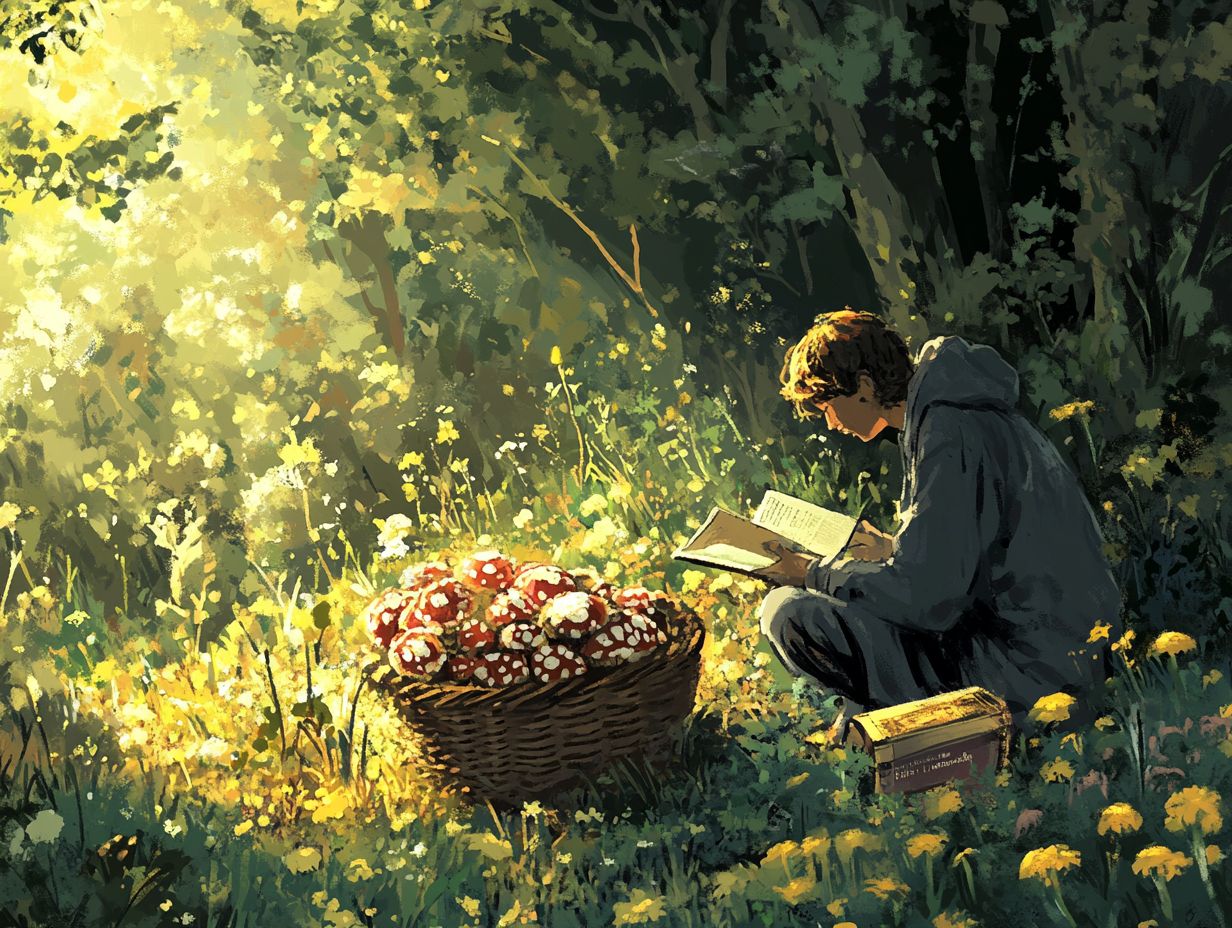
You ll find that many common plants can be foraged, presenting you with a delightful array of flavors and health benefits. Options like morel mushrooms, dandelion, chickweed, and purslane are just waiting for you to explore the edible landscape around you.
Each season offers its unique bounty, allowing you to discover various textures and tastes that will elevate your culinary creations.
Take morel mushrooms, for instance; their nutty flavor and distinctive shape make them a sought-after delicacy in gourmet dishes. Dandelions, often dismissed as mere weeds, are packed with nutritional value and can be incorporated into salads or brewed into tea for their detoxifying benefits.
Chickweed, with its tender leaves, boasts a mild taste that s perfect for fresh salads, while purslane, rich in omega-3 fatty acids, adds a refreshing crunch and tang to your meals.
Identifying these plants is crucial pay attention to their growth habits, leaf shapes, and the environmental conditions they thrive in to ensure a safe harvest.
Remember, responsible harvesting practices are essential to avoid overexploitation and maintain the delicate balance of the ecosystem.
How Can One Properly Identify and Harvest Plants?
Identifying and harvesting plants requires a sharp eye and a solid understanding of the parts of a plant like leaves and roots, seasonal growth patterns, and effective foraging tips that prioritize safety and sustainability.
This knowledge is vital for distinguishing between various species, especially when navigating the perilous line between edible and poisonous options. By utilizing resources like field guides and smartphone apps, you can enhance your ability to recognize plants in their natural habitats. Engaging in expert-led classes also provides hands-on experience that enriches your learning.
Knowing which plants to harvest ensures your safety and encourages responsible foraging practices, preserving ecosystems for future generations. Understanding local regulations and ethical harvesting guidelines is essential; respecting nature fosters a harmonious coexistence with the environment.
What Are Some Safety Precautions to Keep in Mind While Foraging?
Safety precautions are crucial during foraging adventures. Knowing how to identify poisonous plants and having a well-stocked first aid kit can mean the difference between a delightful day in nature and potential danger.
Invest time in understanding your local flora; keen observation helps distinguish between edible and toxic varieties. For a solid start, consider 5 essential tips for fall foraging, as engaging with experienced foragers or participating in workshops significantly boosts your ability to recognize dangerous plants.
Exploring diverse environments with a companion adds an important layer of safety. Carrying a reliable map, GPS device, or downloading a foraging app can assist with navigation. Always inform someone about your foraging routes and expected return time to ensure help is available if needed.
How Can One Incorporate Foraged Foods into Their Diet?
Add foraged foods to your meals for an exciting flavor boost! These ingredients offer unique flavors and nutritious options that elevate everyday meals. This practice fosters a deeper appreciation for the natural world around you.
Foraged ingredients deliver a burst of flavor and boast numerous health benefits that packaged foods can t match. Imagine adding dandelion greens to your salad for a delightful peppery kick, or using wild garlic in your pesto. With creativity, foraged mushrooms can become a luxurious addition to risottos or soups.
Experimenting introduces exciting new tastes and opens the door to a fun culinary adventure. Wild foods are often rich in vitamins and antioxidants, making them a perfect choice for anyone looking to boost their nutritional intake while enjoying cooking.
Frequently Asked Questions
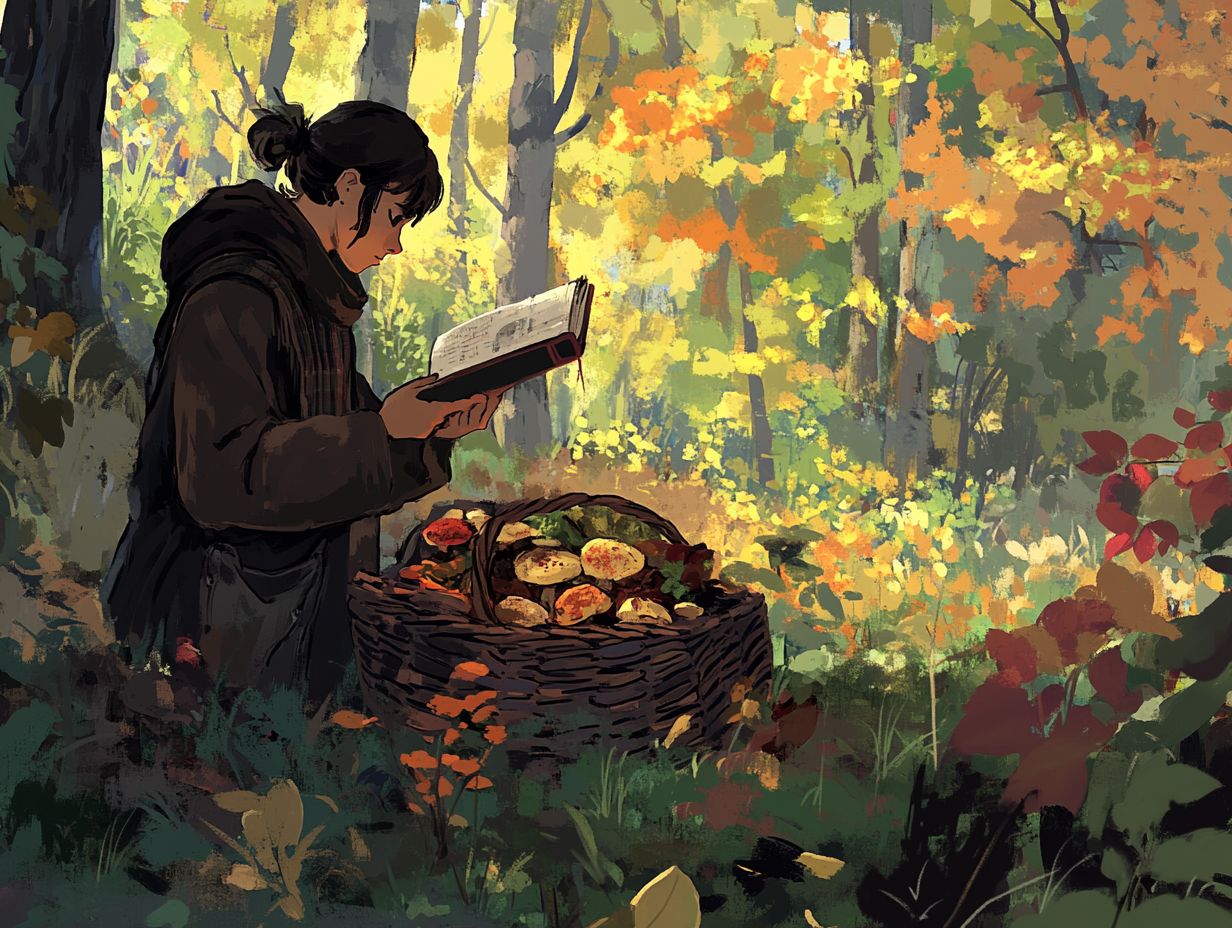
What are the 5 common mistakes new foragers make?
- Not properly identifying plants
- Foraging in prohibited areas
- Not knowing the proper season for foraging
- Not using the correct tools
- Not understanding potential dangers
How can I avoid making mistakes when foraging?
Research plants in your area to avoid foraging mistakes. To enhance your knowledge, consider reading about the 5 myths about foraging safety. Check for rules or restrictions on foraging and understand the seasons for specific plants. Always use proper harvesting tools and be aware of potential hazards.
Why is it important to properly identify plants when foraging?
Properly identifying plants when foraging is crucial to avoid harvesting toxic or poisonous ones. Mastering essential foraging techniques also helps with sustainability and respecting the environment by preventing over-harvesting.
What are some potential dangers of foraging?
Potential dangers of foraging include encountering poisonous plants, getting lost or injured in the wilderness, and unintentionally trespassing on private property. Additionally, it’s crucial to learn about the common mistakes when identifying mushrooms. Researching and taking precautions can help avoid these risks.
Can I forage anywhere and at any time?
No, you cannot forage everywhere or at any time. Always check local rules about foraging in your area.
It’s essential to know the right seasons for collecting different plants. Understanding the dos and don’ts of foraging can help ensure that foraging in restricted areas or at the wrong time does not harm the environment and avoids any legal issues.
What tools should I use for foraging?
Use the right tools, such as a basket for collecting plants, a knife, and gloves. These tools make foraging easier and keep you safe from sharp thorns or poisonous plants. For more guidance, check out 5 essential tips for foraging wild greens.

